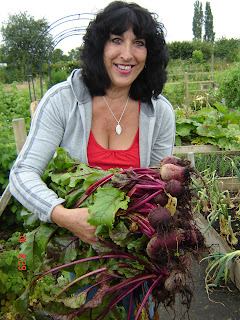



We had planned to go see the forest people this weekend but alas a flooded M5 and blocked M42 put paid to that, which is a shame as we are always treated to 5* food, good company, far too much drink and a damn good giggle.
All was not lost though, we brought a load of firewood in from the log store, lit the fire and hunkered down to watch some tv, read and generally chill out.
One job was started however and that was to turn the half trug of tomatoes into their sundried cousins. Not only are they expensive to buy but converting your crops in times of plenty, into top quality added value items for winter use not only expands your store cupboard but makes financial sense.
As we have had no sun this summer, our sundried tomatoes are dried in a dehydrator. The half trug of tomatoes filled all 5 shelves of ours. All we do is half the smaller tomatoes and cut into thirds the larger ones, lay them cut side up on a shelf and season with Maldon sea salt and a touch of pepper, add shelves until all of the tomatoes are used or the dehydrator is full, put on the lid, turn it on and wait some 12-16 hours until the tomato slices are dry but still bendy. They are then added to a sterile Kilner or Le Parfait jar and topped up with good extra virgin olive oil, ensuring that all of the tomatoes are covered. Seal the jars immediately and store in a cupboard, NOT THE FRIDGE. Once a jar is opened, consume within a few weeks.
Even though I do say so myself, they are good!!



















































